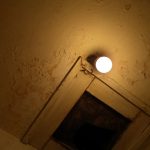Water damage can wreak havoc on your property, leading to expensive repairs and potentially hazardous conditions. In Los Angeles, where heavy rainfall and sudden storms can occur, having a functional sump pump is crucial to protect your home from flooding and water damage. Regularly testing your sump pump ensures it’s ready to kick into action when needed. In this article, we’ll delve into the step-by-step process of testing your sump pump, highlighting its importance in preventing water damage.
Understanding the Sump Pump
A sump pump might not be the most glamorous appliance in your home, but it is crucial in protecting your property from water damage, especially in areas prone to heavy rainfall and flooding, like Los Angeles. Understanding how a sump pump works is essential for homeowners to appreciate its significance and ensure it functions optimally when needed. Let’s delve deeper into the mechanics of a sump pump and its vital role in safeguarding your home.
Components of a Sump Pump System
A sump pump system comprises several components that work together to pump out excess water and prevent flooding:
- Sump Pit: This is a specially constructed pit or basin in the lowest part of your basement or crawlspace. It collects water that may seep into your home’s foundation or accumulate during heavy rains.
- Float Switch: The float switch is a key component that triggers the sump pump into action. It’s attached to the pump and rises as water accumulates in the sump pit. The float switch activates the pump once the water level reaches a certain height.
- Pump Motor: The pump motor powers the pump’s impeller, which creates suction to draw water into the pump. When the float switch signals, the pump motor engages and starts pumping water out of the sump pit.
- Check Valve: A check valve in the discharge pipe carries water away from your home. It prevents pumped water from flowing back into the sump pit once the pump shuts off. This prevents unnecessary cycling of the pump and ensures efficient water removal.
- Discharge Pipe: The discharge pipe carries water from the sump pump to a safe distance from your home’s foundation. This pipe must be clear and unobstructed for proper water drainage.
How a Sump Pump Works
The operation of a sump pump can be broken down into a few simple steps:
- Accumulation of Water: During rainstorms or due to other water-related issues, water can accumulate in the sump pit.
- Rising Water Level: As the sump pit’s water level rises, the pump’s float switch also rises.
- Float Switch Activation: Once the float switch reaches a specific height, it triggers the pump motor to turn on.
- Water Removal: The pump motor activates the impeller, which creates a vacuum effect, drawing water into the pump.
- Discharge: The water is then pushed out of the pump through the discharge pipe and directed away from your home’s foundation.
- Float Switch Deactivation: As the water level in the sump pit decreases, the float switch lowers. When it reaches a certain point, the pump motor turns off.
Types of Sump Pumps
There are two primary types of sump pumps: submersible and pedestal.
- Submersible Sump Pumps: These pumps are designed to be placed inside the submerged sump pit. They are quieter and tend to last longer since they are protected from moisture and debris.
- Pedestal Sump Pumps: These pumps have the motor mounted above the sump pit while the pump is placed inside. They are easier to access for maintenance but may be noisier and have a shorter lifespan due to their exposure to air and moisture.
Regular Maintenance
To ensure your sump pump functions effectively, regular maintenance is essential:
- Clean the Sump Pit: Remove debris, dirt, and sediment from the sump pit to prevent clogging and interference with the float switch.
- Check the Check Valve: Ensure the check valve is working correctly to prevent the backflow of water into the sump pit.
- Test the Float Switch: Pour water into the sump pit to test the float switch’s activation and the pump’s response.
- Inspect the Discharge Pipe: Ensure the discharge pipe is clear of obstructions, allowing water to flow freely away from your home.
- Professional Inspection: Schedule an annual inspection by a professional to address potential issues and ensure your sump pump is in optimal condition.
Importance of Testing Your Sump Pump to Prevent Water Damage
Regularly testing your sump pump is a crucial aspect of home maintenance, particularly for residents of Los Angeles who are susceptible to sudden storms and heavy rainfall. The significance of testing your sump pump cannot be overstated, as it directly contributes to preventing water damage and ensuring the safety of your home. Let’s delve into the key reasons why testing your sump pump is of paramount importance:
Preparedness for Sudden Weather Events
Los Angeles is known for its unpredictable weather patterns. Sudden storms and heavy rains can lead to a rapid accumulation of water around your property. If your sump pump isn’t functioning correctly, your basement or crawlspace could quickly flood, resulting in extensive water damage. Regular testing ensures your sump pump is ready to handle excess water immediately, offering you peace of mind during unexpected weather events.
Prevention of Costly Repairs
Water damage can lead to costly repairs that involve fixing structural issues and addressing potential mold growth and health hazards. By regularly testing your sump pump, you can identify any problems before they escalate into major issues. It’s far more cost-effective to address a malfunctioning sump pump than to deal with the aftermath of water damage, which can require extensive restoration efforts and financial investment.
Protection of Valuables and Possessions
Basements often serve as storage areas for valuable possessions, important documents, and sentimental items. These items could be irreparably damaged if water damage occurs due to a malfunctioning sump pump. By testing your sump pump and ensuring its proper functioning, you’re proactively protecting your belongings and cherished memories from water-related disasters.
Preservation of Home’s Structural Integrity
Water damage can compromise the structural integrity of your home. Water seeps into walls, floors, and foundations, weakening the materials over time. This can lead to issues such as warped wood, cracks in the foundation, and compromised structural stability. Testing your sump pump helps maintain a dry environment, preventing the gradual degradation of your home’s structural components.
Maintenance of a Healthy Indoor Environment
Excess moisture caused by water damage can create an ideal breeding ground for mold and mildew. These fungi damage surfaces and pose health risks to inhabitants, especially those with respiratory issues or allergies. A properly functioning sump pump keeps moisture levels in check, reducing the risk of mold growth and promoting a healthier indoor environment.
Minimization of Insurance Complications
Insurance claims for water damage can be complex and time-consuming. Many insurance policies require homeowners to demonstrate regular maintenance and testing of systems like sump pumps. By maintaining a record of your testing efforts, you can simplify the claims process and increase the likelihood of receiving coverage in the event of water-related damage.
Longevity of Your Sump Pump
Regular testing not only ensures your sump pump’s immediate functionality but also contributes to its longevity. Identifying and addressing minor issues promptly can prevent them from worsening and causing more extensive damage to the pump. This extends the pump’s lifespan, saving you from the hassle and cost of premature replacements.
Peace of Mind During Absences
Whether you’re away on vacation or out for the day, the last thing you want to worry about is the potential for water damage in your absence. Regularly testing your sump pump provides peace of mind, knowing that your home can handle sudden water accumulation. This is especially important in a city like Los Angeles, where unexpected rainstorms can occur even when you’re not around to address the issue immediately.
Compliance with Local Regulations
In some areas, including Los Angeles, local regulations or building codes might require homeowners to maintain functional sump pump systems. By testing your sump pump regularly, you ensure you comply with these regulations, avoiding potential fines or legal issues.
Enhancement of Property Value
When potential buyers assess a property, they look for signs of a well-maintained home. A functional sump pump system demonstrated through regular testing indicates responsible homeownership. If you decide to sell, this can enhance your property’s value and attractiveness to potential buyers.
Preservation of Energy Efficiency
A sump pump that operates efficiently consumes less energy. By testing and maintaining your sump pump, you ensure it’s not working harder than necessary to remove water from the sump pit. This not only saves you money on energy bills but also reduces the overall environmental impact of your home.
Prevention of Basement Flooding
Basements are often the most vulnerable areas when it comes to flooding. If water isn’t redirected away from the foundation, it can seep into the basement, causing damage to walls, flooring, and any possessions stored there. Regular sump pump testing is your first defense against basement flooding, protecting this crucial space from water-related disasters.
Step-by-Step Guide to Testing Your Sump Pump: Prevent Water Damage with Thorough Inspections
A well-functioning sump pump is your home’s defense against water damage, making regular testing an essential maintenance task. Following this detailed step-by-step guide, you can effectively test your sump pump and ensure its readiness to safeguard your home from flooding and water-related disasters.
Gather Supplies
Before beginning the testing process, assemble the necessary supplies to ensure a smooth and safe procedure. You’ll need:
- Gloves: To protect your hands from dirt, debris, and water.
- A Bucket of Water: Used to simulate rising water levels in the sump pit.
- A Flashlight: Essential for inspecting the sump pit, pump, and surrounding area.
- A Testing Device (if available): Some sump pumps have specific testing devices designed to mimic rising water levels. This optional tool can provide a more accurate assessment of your pump’s functionality.
Locate the Sump Pit
The sump pit is a designated basin typically found in the basement or crawlspace of your home. This pit collects excess water that may accumulate due to rain or groundwater infiltration. Keeping the sump pit clear of debris is crucial to allow proper water flow. Clear any dirt, leaves, or other obstructions from the pit to ensure the pump’s optimal operation.
Check the Power
Ensure that your sump pump is connected to a reliable power source. A functional pump will only be of use if it’s receiving power. Additionally, consider the possibility of power outages during storms. Installing a backup power source like a generator or a battery backup system can ensure the pump remains operational even in challenging conditions.
Inspect the Discharge Pipe
The discharge pipe carries water from the sump pit away from your home’s foundation. Regularly inspect this pipe for any obstructions, clogs, or freezing. An obstructed or frozen discharge pipe can hinder water flow, rendering the sump pump ineffective.
Pour Water into the Pit
Simulate rising water levels in the sump pit by slowly pouring a bucket of water into it. This action should trigger the sump pump’s float switch, which activates the pump. Observe the pump’s response as it begins to pump out the water. The float switch is a crucial component that detects water levels and initiates the pump’s operation to prevent flooding.
Listen for Unusual Noises
Pay close attention to any unusual noises or vibrations as the pump starts operating. Grinding or clunking sounds can indicate mechanical issues within the pump. Identifying such sounds early can help prevent breakdowns and the potential for water damage.
Check for Proper Water Discharge
Observe the water discharge process. Ensure water is effectively pumped out and away from your home through the discharge pipe. Proper water discharge is essential to prevent flooding around your property’s foundation.
Use a Testing Device (if available)
If your sump pump comes with a testing device designed to simulate rising water levels, take advantage of it. Follow the manufacturer’s instructions to perform a comprehensive test. This device can provide more accurate insights into your sump pump’s functionality.
Regular Maintenance
Consistent maintenance is key to a functional sump pump. Regularly clean the sump pit to prevent debris accumulation that might obstruct the pump’s operation. Additionally, inspect the pump’s components for signs of wear and tear. If you notice any damaged or worn parts, replace them promptly to maintain the pump’s effectiveness.
While DIY testing is valuable, scheduling a professional inspection at least once a year is highly recommended. Professionals can identify issues that may not be evident during your tests. Their expertise ensures that your sump pump is in optimal condition to protect your home from potential water damage.
Wrapping Up
Testing your sump pump to prevent water damage is a proactive and necessary step for homeowners in Los Angeles, where unexpected storms can lead to flooding. By following this comprehensive guide and understanding the importance of regular testing, you can safeguard your property from the devastating effects of water damage. Remember that a well-maintained sump pump is your first defense against potential water-related disasters.





